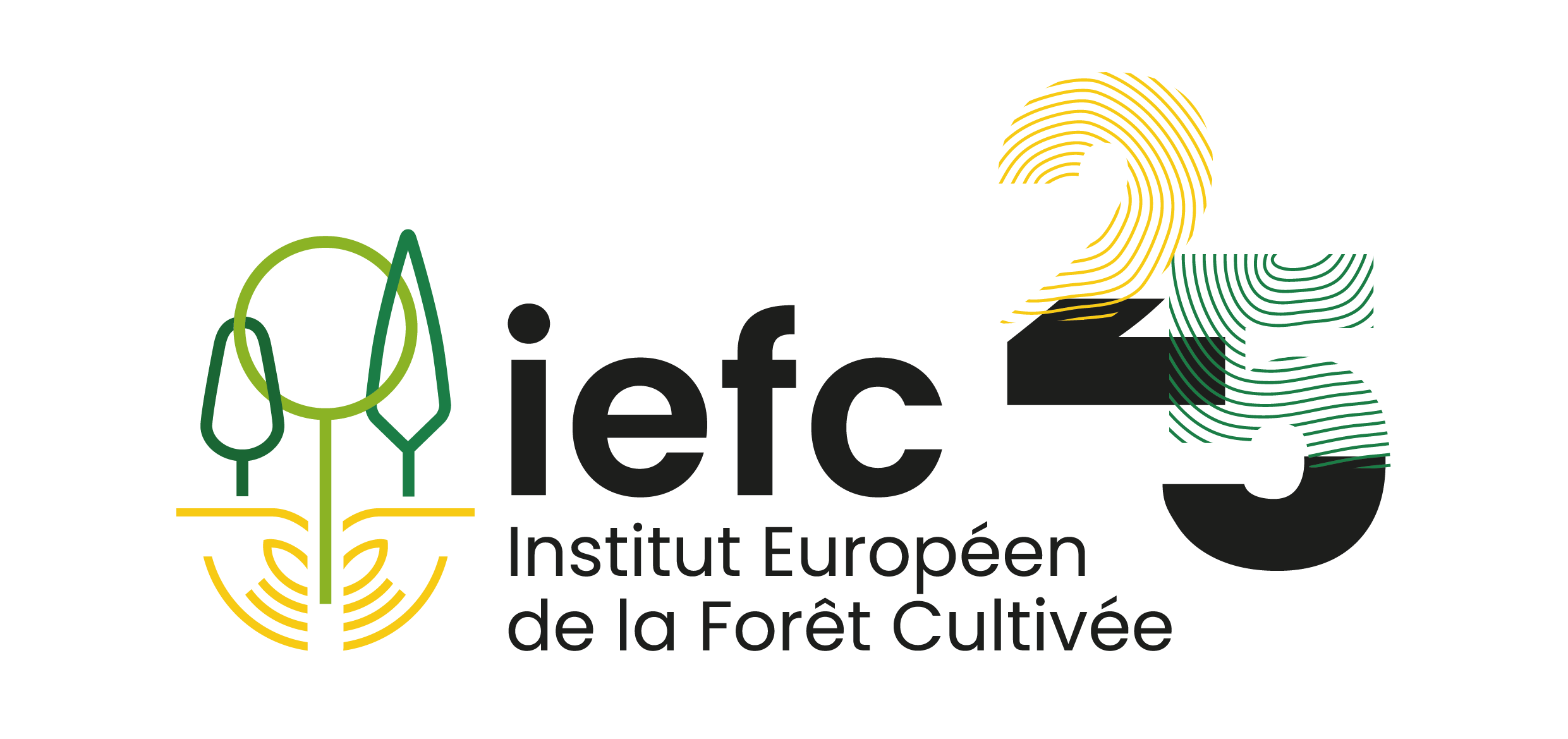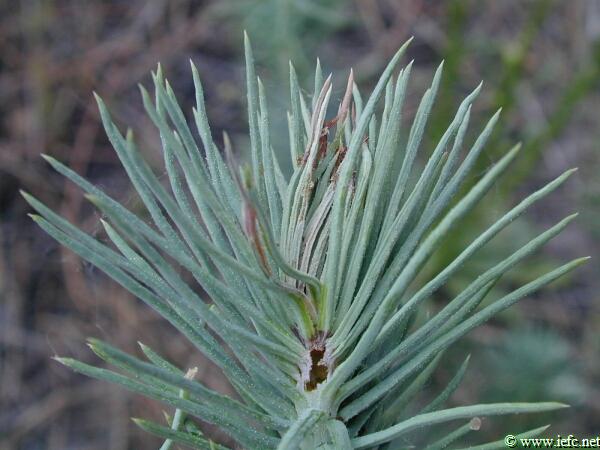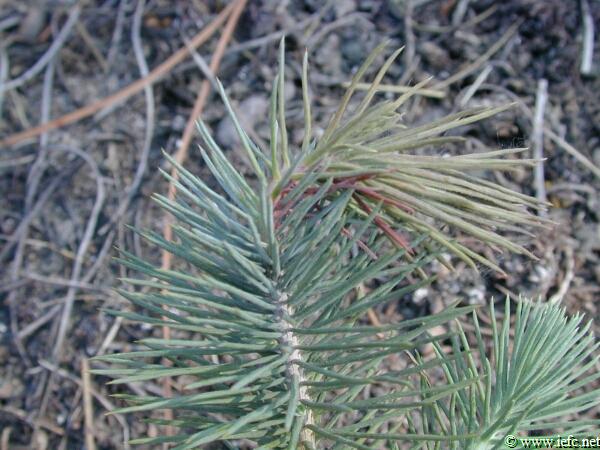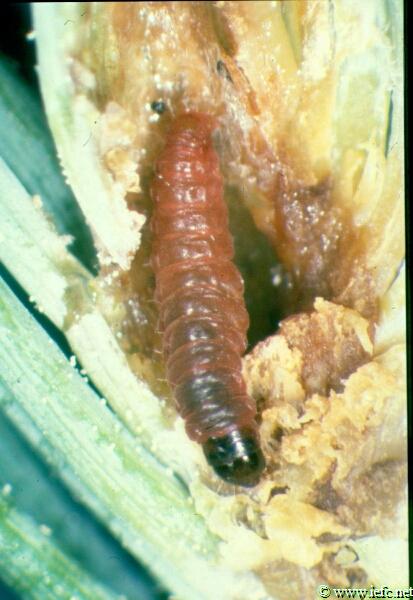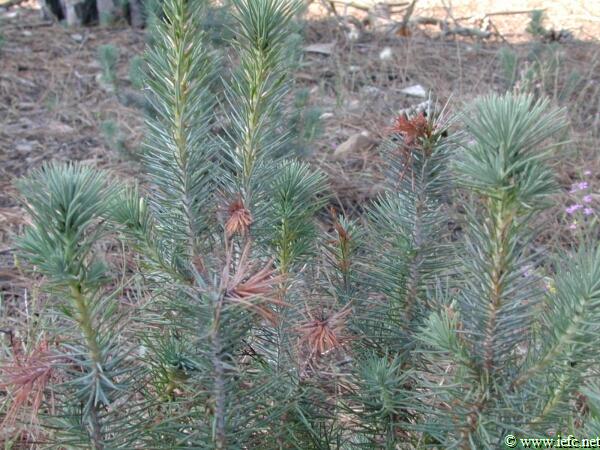Pine tip moth
Rhyacionia duplana (Hübner) (Lepidoptera, Tortricidae)
Synonym: Evetria duplana
Pine shoot moth, Elgin shoot moth.
Host tree
Several pine species: Scots (Pinus sylvestris), Stone (P. pinea), Maritime (P. pinaster) and Monterey pine (P. radiata).
Identification
- In mid spring, needles at the tips of juvenile shoots appear joined together and turn yellow and red starting at their tops (Photo 1 and 2) .
- From mid spring onwards, presence of dead, red, dry and crooked tips of juvenile shoots, without observable pitch accumulation (photo 4).
- From April to July, presence of larvae inside short, descending galleries in the tips of juvenile shoots. Larvae are up to 1 cm long, red-brown to orange-brown with a dark brown head and shield (Photo 3). Larvae of the European pine shoot moth (Rhyacionia buoliana) are bigger and more brownish in colour; they are found in spring boring in the shoots from the base upwards.
- Young trees and seedlings appear excessively branched and cushion-like, as if foraged by cattle (Photo 4).
Damage
- Damage occurs only in seedlings and young plants (2 to 6 years old), always in the shoots with juvenile needles.
- Tips of developing shoots are mined and killed.
- Distortions in height growth: branched and bushy plants.
- Death of seedlings in case of repeated attacks.
Biology
- There is one generation per year.
- Moths fly in early spring (late March and April); eggs are laid singly or in small groups on bud scales and needles.
- Larvae mine short galleries in the growing juvenile shoots from the tip down, during May-July. Each larva consumes several shoot tips.
- Mature larvae leave the shoots in early summer and enter into the soil at the base of the plants, where they pupate in silken cocoons coated with soil particles.
- Pupae overwinter until next spring.
Risk factors
- Insect pest of seedlings and young plants (2-6 years old).
Distribution
- Occurs from Europe to eastern Russia and Japan. Rare or absent in South-eastern Europe.
Pest management
Monitoring
- In spring, observation of seedlings and young plants with dead shoot tips.
- In early spring, pheromone trapping to assess number of moths.
Preventive measurements
Curative control
- The use of insecticides is not recommended and, in most countries, none are registered against this pest.
Climate change
- Effects of climate change are difficult to predict with this species since its climatic requirements are not clearly understood.
